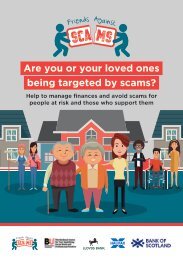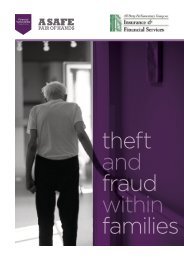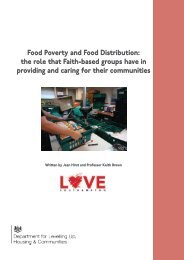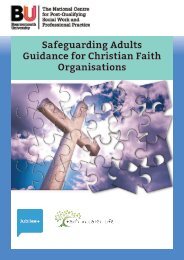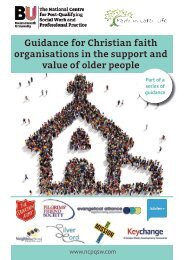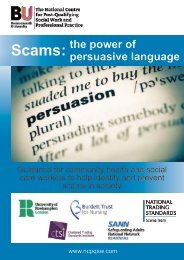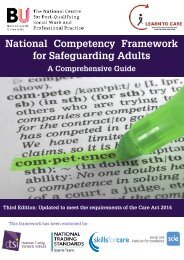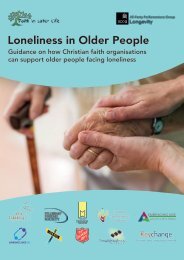0-Coercion and control report with pics FINAL
Coercion and control are used in both domestic and financial abuse. There are also differences in how agencies approach these concerns, and we seek to highlight this to learn from and utilise best practice.
Coercion and control are used in both domestic and financial abuse. There are also differences in how agencies approach these concerns, and we seek to highlight this to learn from and utilise best practice.
Create successful ePaper yourself
Turn your PDF publications into a flip-book with our unique Google optimized e-Paper software.
Reporting<br />
Financial abuse can also be a crime <strong>and</strong> yet we know that a large proportion is thought to<br />
be un-<strong>report</strong>ed <strong>and</strong> responses to it differ according to postcode. ‘FA (financial abuse) is<br />
under-researched, under-<strong>report</strong>ed, under-recognised <strong>and</strong> under-prosecuted’ (MetLife et al<br />
2011; Phelan et al 2018:925).<br />
Research by OFT in 2006 estimated ‘less than five per cent of victims had <strong>report</strong>ed the scam<br />
to the authorities’ (OFT 2006:35). Action Fraud received 875,622 <strong>report</strong>s in 2020-21<br />
(actionfraud.police.uk). The latest estimate from the Crime Survey of Engl<strong>and</strong> <strong>and</strong> Wales<br />
(CSEW) is that there were 5.2 million fraud offences in the year ending December 2021<br />
(ons.gov.uk). The crime survey is an estimate of all offences, not just those that are<br />
<strong>report</strong>ed – but it relies on people recognising that they have been a victim, which we know<br />
is not always the case.<br />
If financial abuse – of any type – is not <strong>report</strong>ed, this means we are using poor-quality,<br />
small-scale research to base our policies on. We cannot have any confidence that our<br />
estimates of scale <strong>and</strong> impact are anywhere close <strong>and</strong> our projections for the future are<br />
wildly inaccurate as a result. Unless <strong>report</strong>s increase there will be little to no media<br />
coverage – leading to a public who are unaware of the significance of the problem. Surveys<br />
have shown that the public vastly underestimates the scale of fraud <strong>and</strong> does not recognise<br />
it as the crime they are most likely to experience. Professionals are also ill-equipped to<br />
meet the rising challenge of financial abuse.<br />
Changes must also be made about how we expect people to <strong>report</strong>. If we use the example<br />
of romance fraud, we know anecdotally that it is more likely to be <strong>report</strong>ed than scams<br />
targeting older people. This is because younger people are often targeted <strong>with</strong> this type of<br />
scam ‘the average dating scam victim is aged 49 <strong>and</strong> loses £10,000’ (Fenge et al 2018:125).<br />
The younger you are, the more capable you are of <strong>report</strong>ing (accessing online <strong>report</strong>ing<br />
tools, low levels of cognitive decline in younger populations). This leaves a risk that our<br />
data <strong>and</strong> preventative strategies will be focused on scams that affect younger people,<br />
ignoring the experiences <strong>and</strong> impact of older scam victims. We already know that the older<br />
you are, the less ability you have to recover money lost - no prospect of future earnings.<br />
You are less likely to be social medial/online savvy <strong>and</strong> there may be less peer to peer<br />
support available to you.<br />
15





